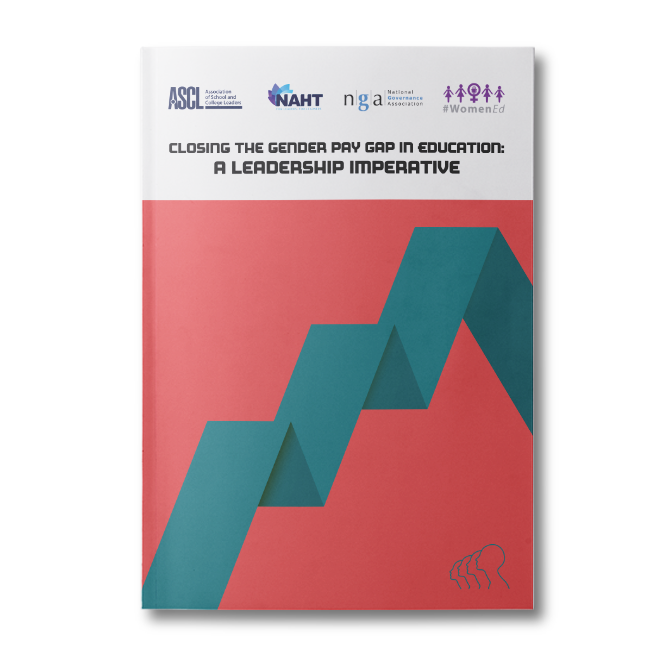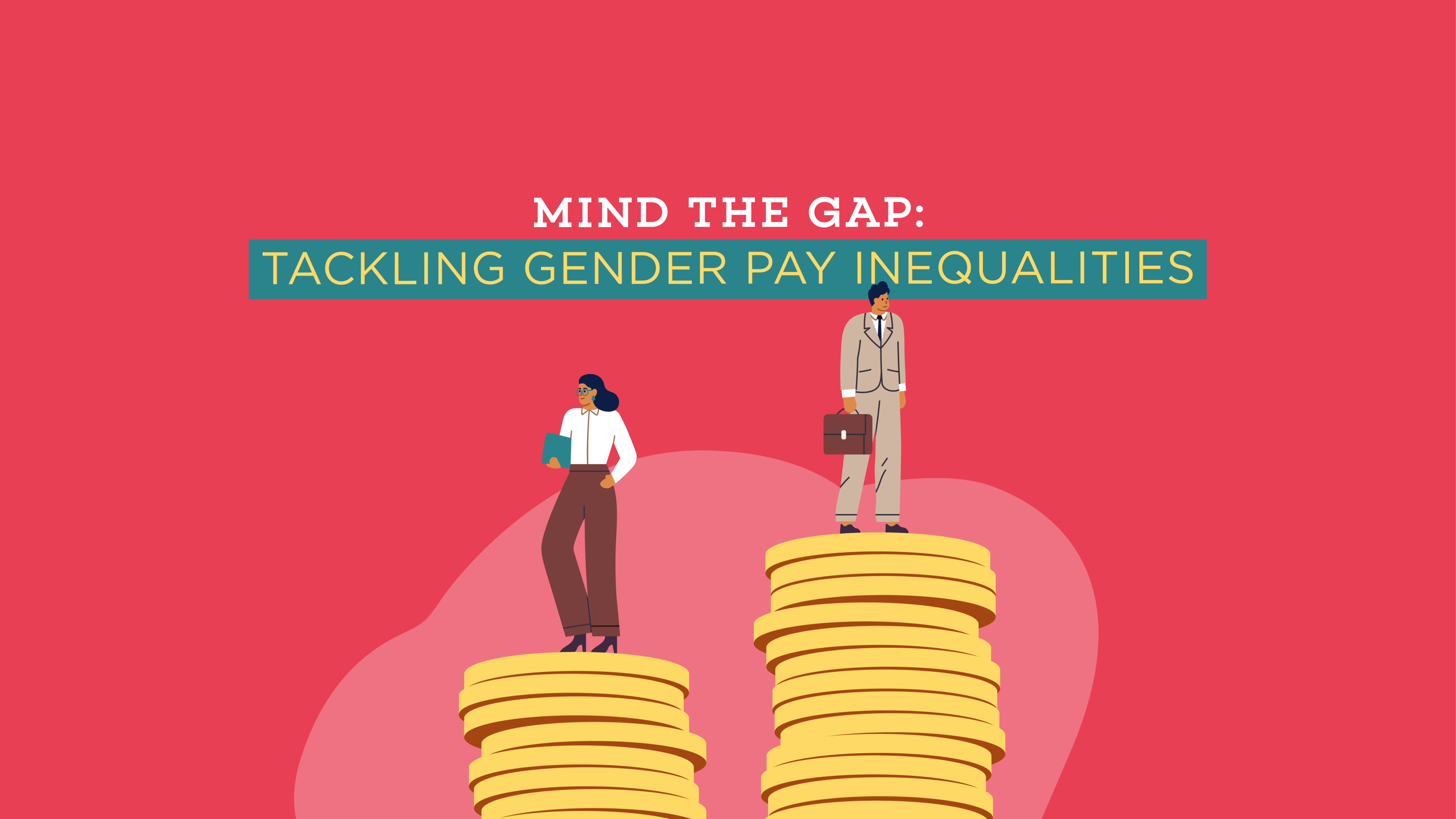
Leadership Focus journalist Nic Paton looks at what needs to happen to address gender pay inequalities across the profession.
How shocked should we be that, in 2022, we’re still talking about the need to narrow gender pay gaps in education?
Schools and school leaders work their hardest to create ‘equal’ childhoods for their pupils – equal opportunities; equal futures – yet, when it comes to their aspirations and progression, stubborn and often systemic gender pay gaps remain across the profession.
Gender pay gaps are the difference in earnings between all women and men in an organisation. Although related, they are distinct from equal pay.
In 2018, the UK government required all organisations (including schools and colleges) with 250 or more employees to report and publish their gender pay gap information.
This has meant that gender pay disparities can often be more easily identified, tracked and monitored than pay gaps concerning other protected characteristics, such as people with disabilities, who come from different ethnic backgrounds or identify differently.
Yet, at the same time, the existence of a gender pay gap can indicate similar disparities or barriers existing in these harder-to-measure protected characteristics.
To try to get a feel for the extent of gender pay disparities in education, at the end of last year, NAHT teamed up with ASCL, the National Governance Association (NGA) and WomenEd to release a report: Closing the gender pay gap in education: a leadership imperative.
Worryingly, the report’s analysis of the school workforce census (SWC) statistics concluded that despite a broad national pay framework, men typically still earn more than women within education, regardless of school phase or structure.



How shocked should we be that, in 2022, we’re still talking about the need to narrow gender pay gaps in education?
Schools and school leaders work their hardest to create ‘equal’ childhoods for their pupils – equal opportunities; equal futures – yet, when it comes to their aspirations and progression, stubborn and often systemic gender pay gaps remain across the profession.
Gender pay gaps are the difference in earnings between all women and men in an organisation. Although related, they are distinct from equal pay.
In 2018, the UK government required all organisations (including schools and colleges) with 250 or more employees to report and publish their gender pay gap information.
This has meant that gender pay disparities can often be more easily identified, tracked and monitored than pay gaps concerning other protected characteristics, such as people with disabilities, who come from different ethnic backgrounds or identify differently.
Yet, at the same time, the existence of a gender pay gap can indicate similar disparities or barriers existing in these harder-to-measure protected characteristics.
To try to get a feel for the extent of gender pay disparities in education, at the end of last year, NAHT teamed up with ASCL, the National Governance Association (NGA) and WomenEd to release a report: Closing the gender pay gap in education: a leadership imperative.
Worryingly, the report’s analysis of the school workforce census (SWC) statistics concluded that despite a broad national pay framework, men typically still earn more than women within education, regardless of school phase or structure.

The difference between the average salaries of men and women also increased with age and seniority in the role. At head teacher level, across all types of state-funded schools, women tend to have steadier increases in salary by age, the report found. In contrast, men tend to see much larger increases, particularly towards the end of their careers.
A similar pattern is seen at ‘other leadership’ levels, although the salary difference is not quite as pronounced. The divergence point is at the 35-39 age bracket, with the difference between average salaries among men and women almost doubling, from £2,760 (for those between 35 and 39 years of age) to £4,024 (for those between 40 and 44 years of age).
In the limited number of cases where the average salary pay gap favours women, the difference tends to be far smaller. For example, the largest gap favouring women in 2020/21 was £892 (classroom teachers in primary academies). The largest gap favouring men was £4,165 (for head teachers in special or pupil referral unit academies).
The gap exists in both primary and secondary at head teacher level – and it is actually increasing over recent years, the report showed.
Over decades, gender pay gaps can amount not only to a substantial difference in terms of money earned but also, of course, have major implications for an individual’s pension and retirement income.

PAUL WHITEMAN,
NAHT GENERAL SECRETARY
For NAHT general secretary Paul Whiteman, these statistics indicate just how much of a job still needs to be done – at individual school, national and governmental level – to narrow gender pay inequalities in the profession.
“We need to remember that equal pay is still as much a problem now as it was 50 years ago. We sometimes forget because there are a lot of other strands of inequality out there that also need to be tackled, just how important pay equality still is,” he tells Leadership Focus.
“So, we need to make sure we keep pay equality absolutely at the forefront of every negotiation and interaction.
“We’ve seen school leadership pay erode over the last decade, and for our female school leaders, there can be almost a ‘double’ hit,” Paul adds.
The ‘Closing the gender pay gap in education’ joint report also acted as a catalyst for bringing members together in February for a virtual roundtable discussion to unpick its findings, consider its implications and gauge what needs to be done.
The initial reaction to the evidence was generally one of disbelief, with attendees noting the starkness of the findings.
For example, one attendee explained that: “On the whole, you don’t know how much other leaders earn. I know my ‘journey’, but I don’t know about anybody else’s. We have the national pay scale, and you assume that is stuck to, but that’s probably as far as most people go.”
The group highlighted how the range of new roles in the system, some of which don’t have the historic pay scale for benchmarking, can muddy the waters around what a role is ‘worth’.
As another of our panellists noted: “This feeds into the issue that you have no idea what somebody else is on in a school similar to yours, whether smaller or larger. At one level, I like that autonomy, and I feel that is right; I think there should be room for manoeuvre. But, again, it just doesn’t help with the gender pay gap in particular, especially when some people may feel more confident about negotiating.”
One NAHT member, a female head teacher in the West Midlands, had recently moved to her current role and highlighted how she had plucked up the courage to ask to be paid, at the very least, the same as in her previous deputy head position. “I felt really, really cheeky for asking that. I know many other people don’t feel cheeky; they just feel entitled to ask. I think that plays into it as well,” she said.
The group discussed the role of flexible working, career breaks and wider societal expectations and norms, all of which can exacerbate gender pay gaps.
As one panel member said of the report’s findings: “At mid-level, it is clear there is quite a good level of gender equality in terms of pay. But then, as people progress and get further in their careers, pay inequality widens. Equally, when people have breaks in the profession, how they come back to where they were is incredibly problematic; I think that is a really big thing.
“Someone has a break for whatever reason. They are, say, an upper pay scale teacher or TLR2, perhaps leading literacy in a big primary school; they have a break and then come back, and suddenly, they are back on the main pay scale. Or they may find it very hard to get back at the level they were. That is a massive barrier. And that comes back to the inchoate nature of the progression through the profession, which makes it very, very difficult,” they added.
The group shared their experiences of the disparities in career breaks seen between men and women in their schools and their personal lives and how this, in turn, feeds into the representation disparity that still often exists in senior leadership in schools.
For example, the ‘Closing the gender pay gap in education’ joint report concluded that, within primary, men are present at senior level at a ratio of almost 2:1 of their representation at teaching level. While just 13% of teaching staff are male, 26% of head teachers are male. It was a similar picture in secondary: 34% of classroom teachers are male, increasing to 60% for head teachers.
“I’ve been in senior leadership positions for 20 years, and a male has never asked to go part-time after the birth of his child. But I think at least 95% of the time, when a female comes back from maternity leave, they ask to go part-time,” one member shared.
“I was four days a week [to look after my children], but when I was promoted to deputy head, I went back to five days a week. My husband, who is also a teacher, floated the idea of going part-time in his schools, but he never put a flexible working request in because it felt like it would have been perceived as being ‘funny’ that he would even ask,” said another member on the panel.
“[In my experience], inequity in our society around caring responsibilities does seem to mean more women want to be part-time or are forced to think of themselves doing that, and that is an issue that will drive inequality in pay. We want to think about how we address that and make it easier for people to work flexibly in school,” a further attendee noted.
Tied into this is the issue of the huge workload senior leaders face. The impact of workload, job intensity and high-stakes accountability is, of course, a massive concern for NAHT on many levels: in terms of pay and recognition, agency and respect, health and well-being, recruitment and retention, and so on. But workload can and should also be seen as an equalities issue, the panel agreed.
“Even the perception of unmanageable workload can be a barrier, especially if it deters up-and-coming school leaders with parental or caring responsibilities from even applying for more senior or headship positions in the first place,” highlighted one attendee. This could help to explain why the number of female senior leaders, who may be more likely to be juggling such caring responsibilities, tended to taper off the further up the leadership scale you go, they also pointed out.
Another added: “It is juggling being a teacher or school leader and all the responsibilities for your class or school, worrying about your home life, your this and your that, and paying the bills. Because, in my experience, there are often huge expectations on females to do all of that additional [home] stuff.”
What, then, needs to (or even can) be done? What can NAHT do about this, and what message needs to go back to the government?
“The government needs to recognise there is an issue,” emphasised one attendee. “Recognise there is an issue, and then we can start doing something about it. But, unless you recognise it, there is nothing any of us can do. And be open, like we all are, to change.”

IAN HARTWRIGHT,
NAHT SENIOR POLICY ADVISOR
“What is important is ensuring that people can work in a sustainable manner. That is something we have talked to the Department for Education (DfE) a lot about over the last two years, about making school leadership a sustainable career. Because, quite clearly, it isn’t,” NAHT senior policy advisor Ian Hartwright agrees to Leadership Focus.
There is an important role in here, too, for governors. Governors need to consider the equality impact of their decisions (especially on pay and progression), and they may need more training and support around the potential for unconscious bias.
“Governors obviously play a key role in senior leadership appointment and head teachers’ performance management, and that is one of the key elements of moving forward,” Ian adds.
NAHT also needs to be using its evidence around gender inequality as a springboard into advocacy, conversations and campaigning around narrowing inequality across the board.
“The gender pay gap report is a really good way into that,” emphasises Ian, highlighting that, within its evidence on pay this year to the independent School Teachers’ Review Body (STRB), NAHT has called for a ‘comprehensive analysis of the gender pay gap’ to be undertaken, along with ‘action to eliminate pay gaps for all protected characteristics to ensure pay equality and equity’.
“The DfE has not done any work on this for five years, despite the STRB saying that it needs to do the work and do the maths to find out what the gender pay gap is,” Ian continues.
“I think gender pay inequality is a key that unlocks the door for us to all the other equalities issues that exist around pay; those really knotty and difficult ones, like around disability, ethnicity, race and so on. It’s 2022 – yes, these are all massively difficult areas, but they must be tackled,” Ian adds.

NATALIE ARNETT,
NAHT SENIOR EQUALITIES OFFICER
“It is about seeing the interplay, not seeing the structures in isolation,” agrees NAHT senior equalities officer Natalie Arnett. “Education is part of the wider cultural system, and that has interplays and effects in schools. It is really important and should not be forgotten.”




The initial reaction to the evidence was generally one of disbelief, with attendees noting the starkness of the findings.
For example, one attendee explained that: “On the whole, you don’t know how much other leaders earn. I know my ‘journey’, but I don’t know about anybody else’s. We have the national pay scale, and you assume that is stuck to, but that’s probably as far as most people go.”
The group highlighted how the range of new roles in the system, some of which don’t have the historic pay scale for benchmarking, can muddy the waters around what a role is ‘worth’.

As another of our panellists noted: “This feeds into the issue that you have no idea what somebody else is on in a school similar to yours, whether smaller or larger. At one level, I like that autonomy, and I feel that is right; I think there should be room for manoeuvre. But, again, it just doesn’t help with the gender pay gap in particular, especially when some people may feel more confident about negotiating.”
One NAHT member, a female head teacher in the West Midlands, had recently moved to her current role and highlighted how she had plucked up the courage to ask to be paid, at the very least, the same as in her previous deputy head position. “I felt really, really cheeky for asking that. I know many other people don’t feel cheeky; they just feel entitled to ask. I think that plays into it as well,” she said.
The group discussed the role of flexible working, career breaks and wider societal expectations and norms, all of which can exacerbate gender pay gaps.
As one panel member said of the report’s findings: “At mid-level, it is clear there is quite a good level of gender equality in terms of pay. But then, as people progress and get further in their careers, pay inequality widens. Equally, when people have breaks in the profession, how they come back to where they were is incredibly problematic; I think that is a really big thing.
“Someone has a break for whatever reason. They are, say, an upper pay scale teacher or TLR2, perhaps leading literacy in a big primary school; they have a break and then come back, and suddenly, they are back on the main pay scale. Or they may find it very hard to get back at the level they were. That is a massive barrier. And that comes back to the inchoate nature of the progression through the profession, which makes it very, very difficult,” they added.
The group shared their experiences of the disparities in career breaks seen between men and women in their schools and their personal lives and how this, in turn, feeds into the representation disparity that still often exists in senior leadership in schools.
For example, the ‘Closing the gender pay gap in education’ joint report concluded that, within primary, men are present at senior level at a ratio of almost 2:1 of their representation at teaching level. While just 13% of teaching staff are male, 26% of head teachers are male. It was a similar picture in secondary: 34% of classroom teachers are male, increasing to 60% for head teachers.
“I’ve been in senior leadership positions for 20 years, and a male has never asked to go part-time after the birth of his child. But I think at least 95% of the time, when a female comes back from maternity leave, they ask to go part-time,” one member shared.
“I was four days a week [to look after my children], but when I was promoted to deputy head, I went back to five days a week. My husband, who is also a teacher, floated the idea of going part-time in his schools, but he never put a flexible working request in because it felt like it would have been perceived as being ‘funny’ that he would even ask,” said another member on the panel.

“[In my experience], inequity in our society around caring responsibilities does seem to mean more women want to be part-time or are forced to think of themselves doing that, and that is an issue that will drive inequality in pay. We want to think about how we address that and make it easier for people to work flexibly in school,” a further attendee noted.
Tied into this is the issue of the huge workload senior leaders face. The impact of workload, job intensity and high-stakes accountability is, of course, a massive concern for NAHT on many levels: in terms of pay and recognition, agency and respect, health and well-being, recruitment and retention, and so on. But workload can and should also be seen as an equalities issue, the panel agreed.
“Even the perception of unmanageable workload can be a barrier, especially if it deters up-and-coming school leaders with parental or caring responsibilities from even applying for more senior or headship positions in the first place,” highlighted one attendee. This could help to explain why the number of female senior leaders, who may be more likely to be juggling such caring responsibilities, tended to taper off the further up the leadership scale you go, they also pointed out.

Another added: “It is juggling being a teacher or school leader and all the responsibilities for your class or school, worrying about your home life, your this and your that, and paying the bills. Because, in my experience, there are often huge expectations on females to do all of that additional [home] stuff.”
What, then, needs to (or even can) be done? What can NAHT do about this, and what message needs to go back to the government?
“The government needs to recognise there is an issue,” emphasised one attendee. “Recognise there is an issue, and then we can start doing something about it. But, unless you recognise it, there is nothing any of us can do. And be open, like we all are, to change.”

IAN HARTWRIGHT,
NAHT SENIOR POLICY ADVISOR
“What is important is ensuring that people can work in a sustainable manner. That is something we have talked to the Department for Education (DfE) a lot about over the last two years, about making school leadership a sustainable career. Because, quite clearly, it isn’t,” NAHT senior policy advisor Ian Hartwright agrees to Leadership Focus.
There is an important role in here, too, for governors. Governors need to consider the equality impact of their decisions (especially on pay and progression), and they may need more training and support around the potential for unconscious bias.

“Governors obviously play a key role in senior leadership appointment and head teachers’ performance management, and that is one of the key elements of moving forward,” Ian adds.
NAHT also needs to be using its evidence around gender inequality as a springboard into advocacy, conversations and campaigning around narrowing inequality across the board.
“The gender pay gap report is a really good way into that,” emphasises Ian, highlighting that, within its evidence on pay this year to the independent School Teachers’ Review Body (STRB), NAHT has called for a ‘comprehensive analysis of the gender pay gap’ to be undertaken, along with ‘action to eliminate pay gaps for all protected characteristics to ensure pay equality and equity’.
“The DfE has not done any work on this for five years, despite the STRB saying that it needs to do the work and do the maths to find out what the gender pay gap is,” Ian continues.
“I think gender pay inequality is a key that unlocks the door for us to all the other equalities issues that exist around pay; those really knotty and difficult ones, like around disability, ethnicity, race and so on. It’s 2022 – yes, these are all massively difficult areas, but they must be tackled,” Ian adds.

NATALIE ARNETT,
NAHT SENIOR EQUALITIES OFFICER
“It is about seeing the interplay, not seeing the structures in isolation,” agrees NAHT senior equalities officer Natalie Arnett. “Education is part of the wider cultural system, and that has interplays and effects in schools. It is really important and should not be forgotten.”
VIEW FROM THE NATIONS
Pay gaps and pay inequalities remain a ‘live’ issue for NAHT in Wales and Northern Ireland, as much as in England, point out NAHT Cymru director Laura Doel and NAHT Northern Ireland interim director Graham Gault.

LAURA DOEL,
NAHT CYMRU DIRECTOR

“For example, we know there are female school leaders across Wales who often don’t feel in a position to be able to negotiate on pay,” Laura says, also highlighting the current pay disparity between small, rural and often federated schools and larger, often more urban schools.
Because pay rises come out of school budgets, explains Laura, school leaders could sometimes feel reluctant to argue the case with a local authority or governing body to be paid more.
“We always encourage members going through this situation to contact us because we can offer additional support. We firmly believe we need to do all we can, as a trade union, to narrow gender and other pay gaps.

GRAHAM GAULT,
NAHT(NI) INTERIM DIRECTOR
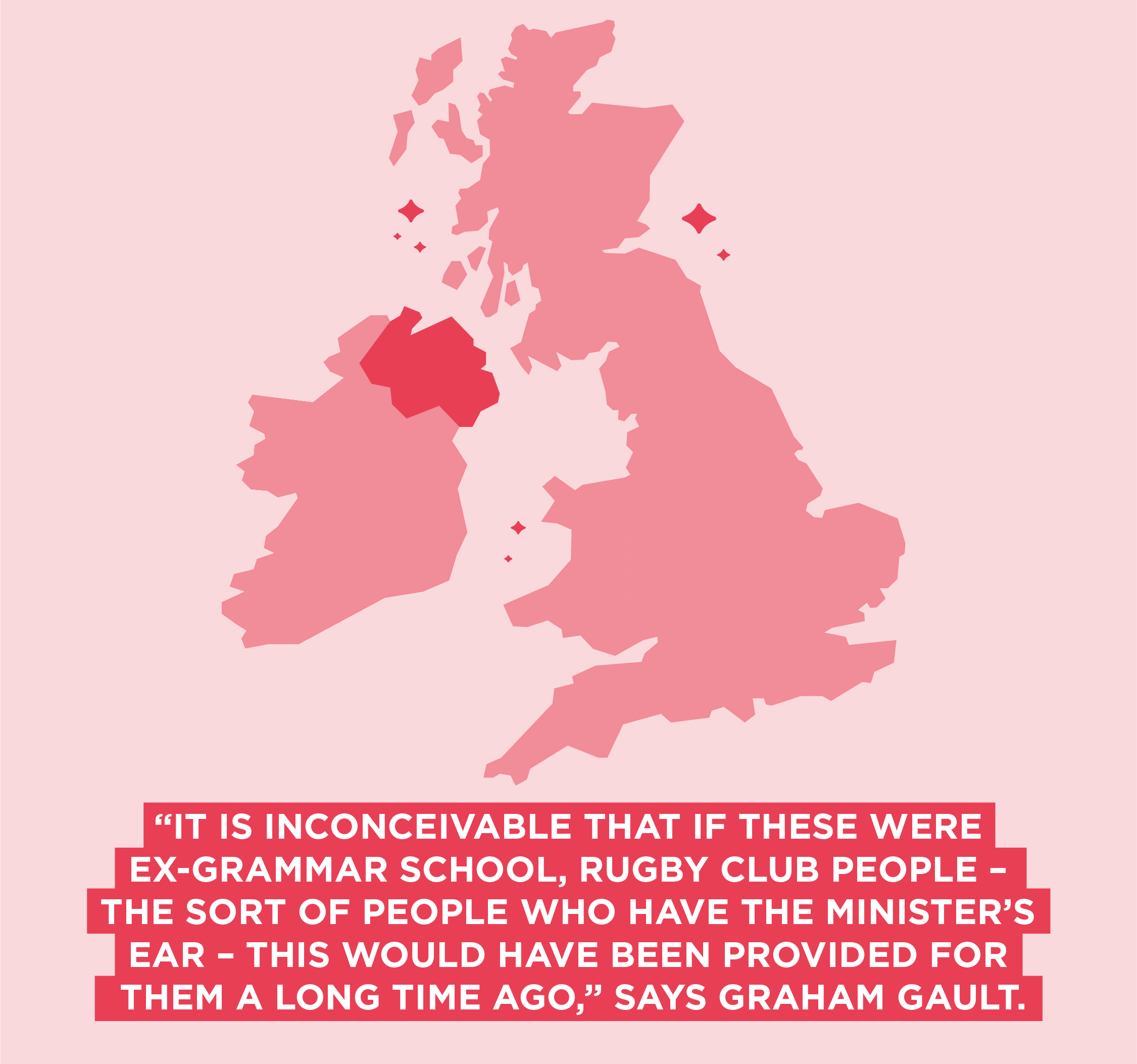
For Graham, one equality issue on the agenda in Northern Ireland is that of nursery principals. This is because, first, they are the only principal cohort in Northern Ireland to have no release from teaching responsibilities, despite working under many of the same accountability and workload demands and pressures as their counterparts in primary schools.
Then, second is the fact that they are in the only school principal cohort in Northern Ireland that is exclusively female, making this disparity – very clearly – an equalities issue, he argues, and one that NAHT Northern Ireland is campaigning on.
“It is inconceivable that if these were ex-grammar school, rugby club people – the sort of people who have the minister’s ear – this would have been provided for them a long time ago,” Graham points out.
VIEW FROM THE NATIONS
Pay gaps and pay inequalities remain a ‘live’ issue for NAHT in Wales and Northern Ireland, as much as in England, point out NAHT Cymru director Laura Doel and NAHT Northern Ireland interim director Graham Gault.

LAURA DOEL,
NAHT CYMRU DIRECTOR
“For example, we know there are female school leaders across Wales who often don’t feel in a position to be able to negotiate on pay,” Laura says, also highlighting the current pay disparity between small, rural and often federated schools and larger, often more urban schools.
Because pay rises come out of school budgets, explains Laura, school leaders could sometimes feel reluctant to argue the case with a local authority or governing body to be paid more.
“We always encourage members going through this situation to contact us because we can offer additional support. We firmly believe we need to do all we can, as a trade union, to narrow gender and other pay gaps.

GRAHAM GAULT,
NAHT(NI) INTERIM DIRECTOR
For Graham, one equality issue on the agenda in Northern Ireland is that of nursery principals. This is because, first, they are the only principal cohort in Northern Ireland to have no release from teaching responsibilities, despite working under many of the same accountability and workload demands and pressures as their counterparts in primary schools.
Then, second is the fact that they are in the only school principal cohort in Northern Ireland that is exclusively female, making this disparity – very clearly – an equalities issue, he argues, and one that NAHT Northern Ireland is campaigning on.
“It is inconceivable that if these were ex-grammar school, rugby club people – the sort of people who have the minister’s ear – this would have been provided for them a long time ago,” Graham points out.


WHAT NAHT HAS CALLED FOR
As well as its evidence for broad gender pay gaps across the profession, the ‘Closing the gender pay gap in education’ joint report made a range of recommendations for the government, schools and trusts, governors and individuals.

The government, it argued, should seek to do the following:
• Improve national-level analysis of the pay gap trends from the DfE. There should also be better data and information on pay for school business leaders. This data collection must also consider improvements in the data collected for those with protected characteristics
• Act on the calls from the STRB and the sector for a comprehensive review of the pay framework for both classroom teachers and school leaders
• Carry out comprehensive analysis (probably by the DfE) on the equality implications of the teachers and school leaders’ pay system, including consideration of the role that performance-related pay has on the gender pay gap
• Review the factors determining pay for school leaders and question which leadership roles are covered by the existing pay structure
• Provide greater support to help mitigate some of the systemic barriers to flexible working opportunities for all roles, including senior leaders
• Encourage men and women to share caring responsibilities better, including greater promotion of paternal leave.

Schools and trusts, the report recommended,
should seek to do the following:
• Understand the situation in your organisation. Even if you are not legally required to undertake gender pay gap collection, it is still good practice to collect and analyse the data for internal purposes. You should consider reviewing data on staffing makeup and rates of progression based on gender
• Depending on the size of your school, consider publishing your gender pay gap information (even if you’re not legally required to do so) because this helps to create transparency and is an opportunity to share what actions you are taking to address any differences that might exist
• For those schools with extremely small staffing bodies, where it might not always be possible to monitor the data effectively, still undertake proactive measures aimed at preventing a gender pay gap from emerging
• Actively interrogate the evidence regularly. Work with your governors and senior leaders to ask pertinent questions if your data monitoring suggests a gender pay gap exists
• Where a gap exists, create a plan and change your gender pay gap report from monitoring to an action tool. This might include the following:
– reviewing recruitment materials and processes to ensure they do not include any gendered perceptions and/or biases
– reviewing ways to ensure interview panels are as diverse as possible
– reviewing approaches to flexible working, and reviewing and planning actions to retain more women leaders following maternity leave
– considering opportunities to offer childcare facilities and opportunities to offer mentoring systems for aspiring leaders from protected groups.
• Remove the request for a current salary from your recruitment materials and requests for references. Asking candidates for their current salaries can undermine other diversity, equity and inclusion initiatives being undertaken
• Ensure your school’s core values support equality, diversity and inclusion
• Seek to work collaboratively across local authorities and/or trusts and with sector organisations to mentor and support school leaders to address their gender pay gaps.

Governing boards, the report argued, should seek to do the following:
• Review your organisation’s recruitment policy and its outcomes to ensure they support equality, diversity and inclusion
• Ensure there is a regular review of your organisation’s pay policy and pay-setting procedures in light of any gender pay gap information
• Review the diversity of your governance team. The NGA (www.nga.org.uk) has a number of resources that can help
• Ensure recruiting panels for appointments are diverse, with interview panels including women.

Finally, the report recommended that individual employees or school leaders should seek to do the following:
• Find out if your organisation has published a gender pay gap report, and if there is a gap, ask how it is seeking to reduce it; ask your organisation whether it collects data on any other pay gaps, such as an ethnicity pay gap
• Contribute to creating and evaluating your organisational action plan to reduce the gender pay gap
• Review and/or support the development of the organisational strategy for flexible working. Review whether your organisation retains the current salary question on the application form. If yes, ask ‘why?’
• Consider opportunities to develop your negotiation skills
• Involve your union representative in such issues to ensure women are represented effectively.



WHAT NAHT HAS CALLED FOR
As well as its evidence for broad gender pay gaps across the profession, the ‘Closing the gender pay gap in education’ joint report made a range of recommendations for the government, schools and trusts, governors and individuals.

The government, it argued, should seek to do the following:
• Improve national-level analysis of the pay gap trends from the DfE. There should also be better data and information on pay for school business leaders. This data collection must also consider improvements in the data collected for those with protected characteristics
• Act on the calls from the STRB and the sector for a comprehensive review of the pay framework for both classroom teachers and school leaders
• Carry out comprehensive analysis (probably by the DfE) on the equality implications of the teachers and school leaders’ pay system, including consideration of the role that performance-related pay has on the gender pay gap
• Review the factors determining pay for school leaders and question which leadership roles are covered by the existing pay structure
• Provide greater support to help mitigate some of the systemic barriers to flexible working opportunities for all roles, including senior leaders


Schools and trusts, the report recommended,
should seek to do the following:
• Understand the situation in your organisation. Even if you are not legally required to undertake gender pay gap collection, it is still good practice to collect and analyse the data for internal purposes. You should consider reviewing data on staffing makeup and rates of progression based on gender
• Depending on the size of your school, consider publishing your gender pay gap information (even if you’re not legally required to do so) because this helps to create transparency and is an opportunity to share what actions you are taking to address any differences that might exist
• For those schools with extremely small staffing bodies, where it might not always be possible to monitor the data effectively, still undertake proactive measures aimed at preventing a gender pay gap from emerging
• Actively interrogate the evidence regularly. Work with your governors and senior leaders to ask pertinent questions if your data monitoring suggests a gender pay gap exists
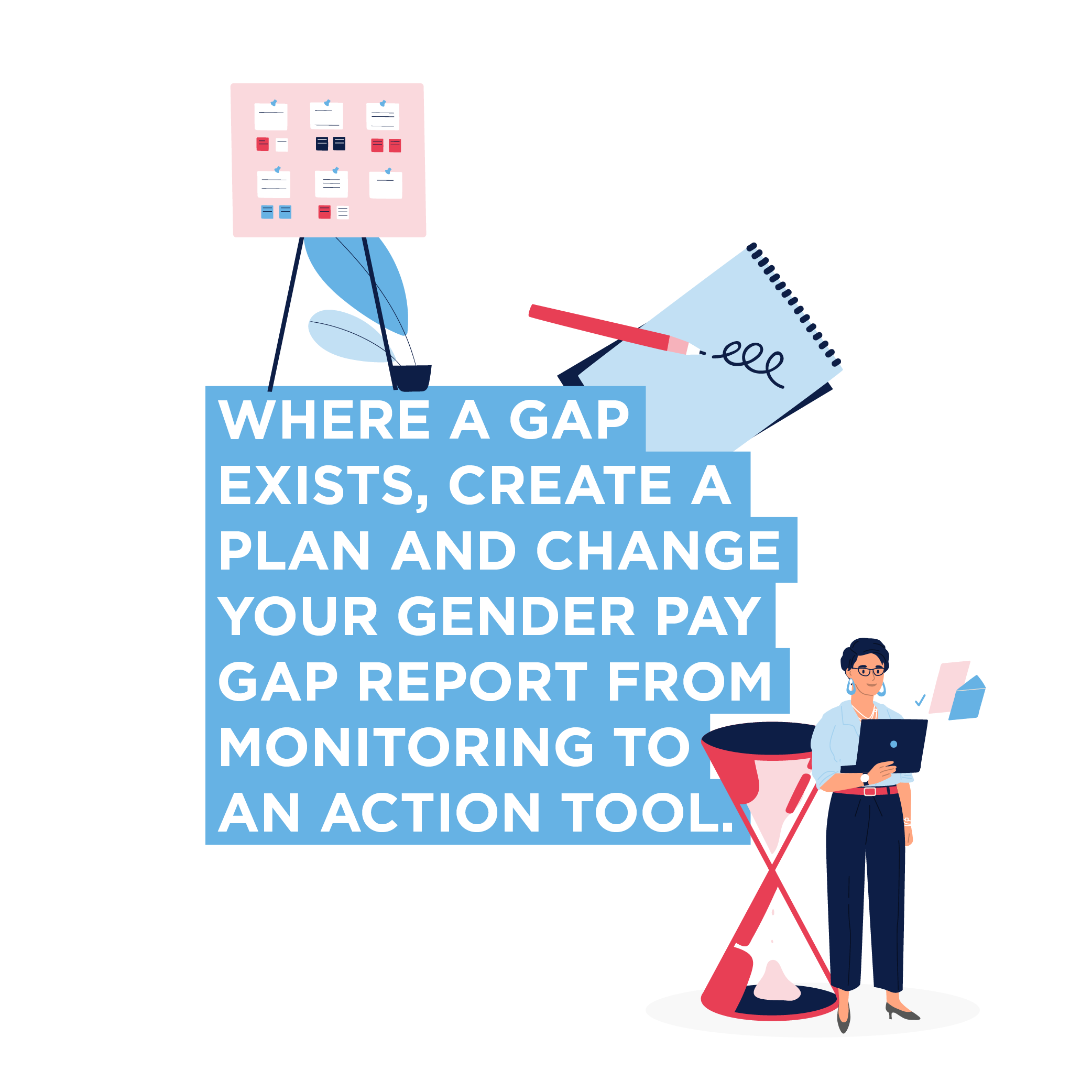
This might include the following:
– reviewing recruitment materials and processes to ensure they do not include any gendered perceptions and/or biases
– reviewing ways to ensure interview panels are as diverse as possible
– reviewing approaches to flexible working, and reviewing and planning actions to retain more women leaders following maternity leave
– considering opportunities to offer childcare facilities and opportunities to offer mentoring systems for aspiring leaders from protected groups.
• Remove the request for a current salary from your recruitment materials and requests for references. Asking candidates for their current salaries can undermine other diversity, equity and inclusion initiatives being undertaken
• Ensure your school’s core values support equality, diversity and inclusion
• Seek to work collaboratively across local authorities and/or trusts and with sector organisations to mentor and support school leaders to address their gender pay gaps.

Governing boards, the report argued, should seek to do the following:
• Review your organisation’s recruitment policy and its outcomes to ensure they support equality, diversity and inclusion
• Ensure there is a regular review of your organisation’s pay policy and pay-setting procedures in light of any gender pay gap information
• Review the diversity of your governance team. The NGA (www.nga.org.uk) has a number of resources that can help
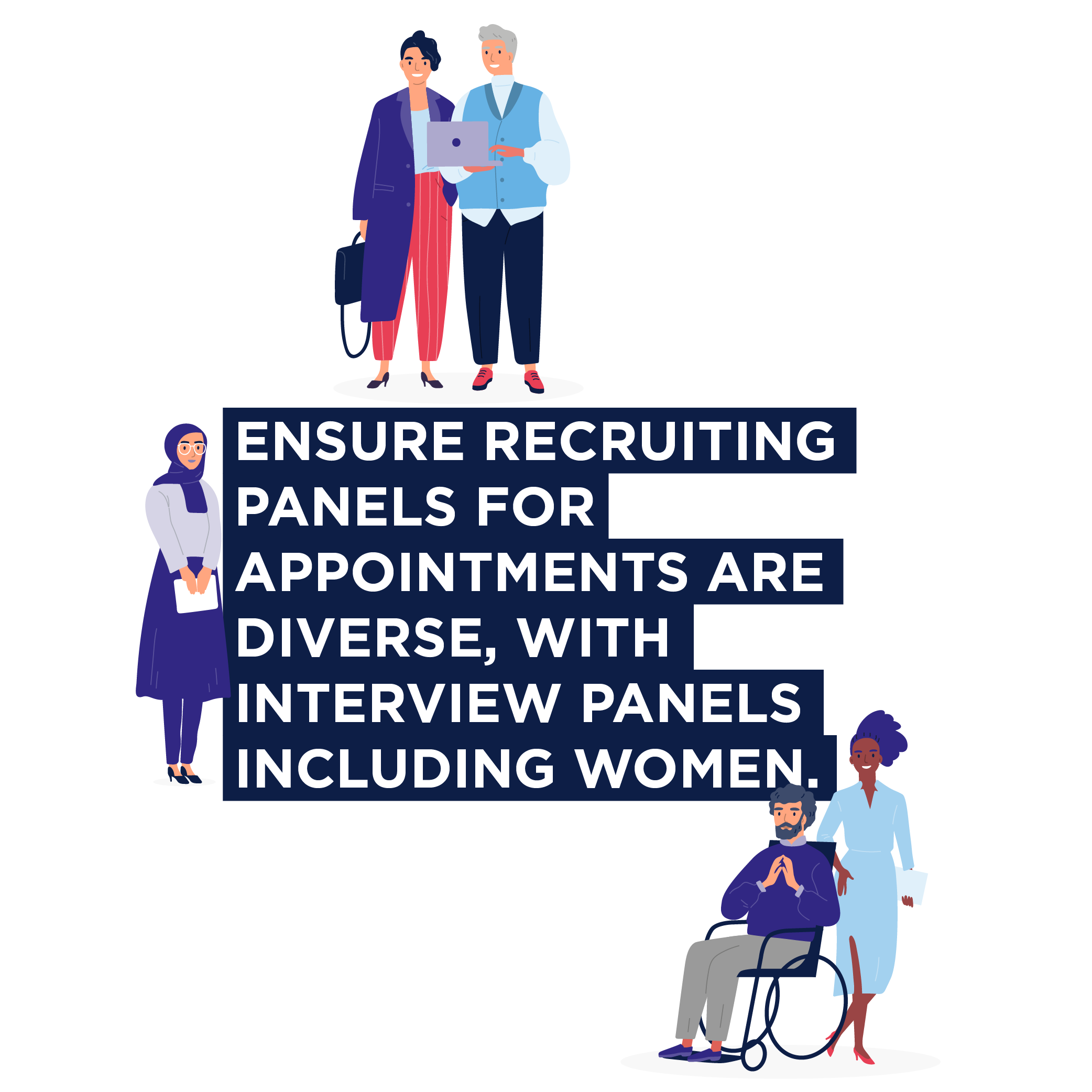

Finally, the report recommended that individual employees or school leaders should seek to do the following:
• Find out if your organisation has published a gender pay gap report, and if there is a gap, ask how it is seeking to reduce it; ask your organisation whether it collects data on any other pay gaps, such as an ethnicity pay gap
• Contribute to creating and evaluating your organisational action plan to reduce the gender pay gap
• Review and/or support the development of the organisational strategy for flexible working. Review whether your organisation retains the current salary question on the application form. If yes, ask ‘why?’
• Consider opportunities to develop your negotiation skills
• Involve your union representative in such issues to ensure women are represented effectively.

